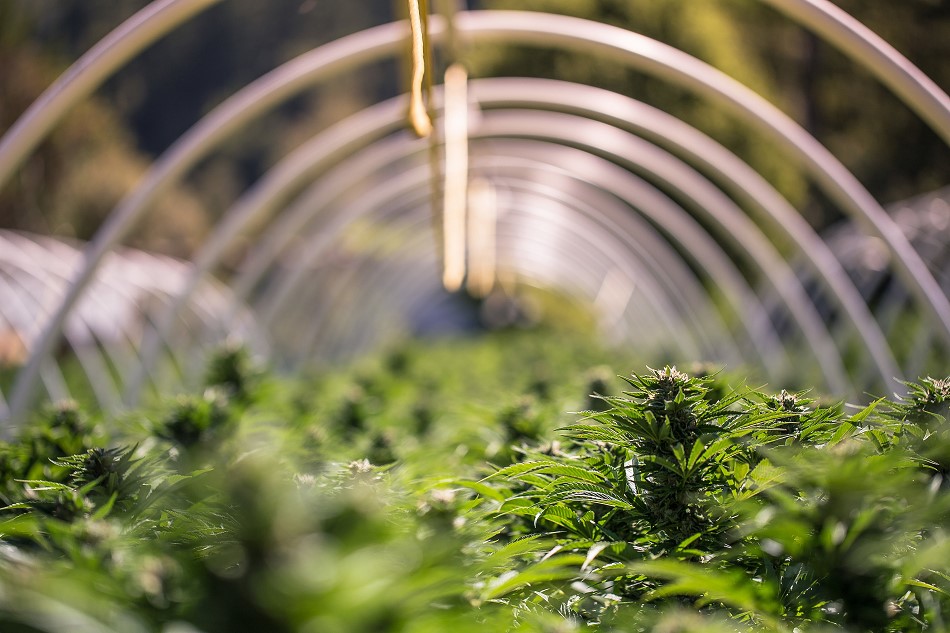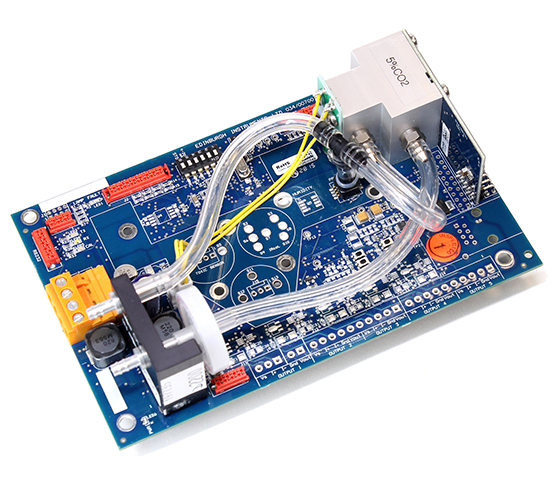Following the legalisation of marijuana sale for medical use in 33 US states1 and Canada,2 marijuana sales have become big business. It is estimated that in 2020 US retail sales of marijuana will continue their rapid growth, from $15. 7 billion to $19 billion3 with suppliers struggling to keep up with demand. In Colorado alone, legal demand for medical use marijuana was exceeding 100 metric tons per year in 2014.4 This means that there is strong motivation towards improving marijuana crop yields and the efficiency of the growth process.
Marijuana grows in a similar way to many other crops, and plants typically favor relatively warm, light and humid conditions.5 Strains of marijuana may be chosen for their tetrahydrocannabinol (THC) content, where products generally labeled as ‘hemp’, such as oils and rope, are derived from low THC plants and those with higher THC content are grown for recreational use.
Improving Yields
One of the ways of improving crop yields that has become popular is the use of modified atmospheres.6 Doing this involves growing the crops in an atmosphere that has been deliberately changed to control certain concentrations of gases. This is commonly used not just for food growth, but also to help improve crop quality7 and as a way of preserving products during transportation.8 To help with crop growth, one of the most effective gas concentrations to alter is carbon dioxide.
For plants, carbon dioxide is an important chemical foodstuff. This is because, in the photosynthetic process, the plant combines carbon dioxide and water in the presence of sunlight to produce sugars and oxygen. These sugars can then be used as a source of energy, or converted into other chemicals, such as chlorophyll, as the building blocks of plant growth. The oxygen is released back into the atmosphere where it is available for all other life on Earth.
It has been shown that crop yields can be increased through elevated carbon dioxide concentrations9 and that, for crops such as legumes the overall biomass and leaf growth rates can be enhanced for using specific carbon dioxide concentrations. However, the same work also showed that too large an increase in levels of carbon dioxide led to reduced seed growth and other detrimental factors.10
The same is true for marijuana plants. Increased CO2 levels have been shown to help both growth time, rooting time for clone plants and overall plant health by helping make healthier plants that are more resistant to infection.11
Balancing Act
However, there is such a thing as too much CO2. Excess CO2 levels can lead to dark spots appearing on leaves and, in extreme cases, plant death. Optimum levels for marijuana plants are thought to be in the 1200 – 1500 ppm range, which means that gas compositions need to be very carefully controlled.11
Ideally, such control needs to be performed in an automated way as well, as high CO2 levels are potentially dangerous to humans. This, in conjunction with an online, continual monitoring sensor system means that growing conditions can be controlled at all times, without the need for additional human involvement.12
Automated Solutions
Such automated solutions for greenhouses require gas monitors that have excellent sensitivity, accuracy and can be used for continual online monitoring. Edinburgh Sensors are experts at developing and producing non-dispersive infrared sensors (NDIR) that do just this.13 With a range of products available well-suited to online logging of carbon dioxide concentrations and the possibility for integration into feedback systems for online gas control, Edinburgh Sensors offers a range of solutions for improving crop yield of marijuana plants.
Suitable sensors for installation in a greenhouse for online active monitoring include the Guardian NG14 and Gascard NG15. Both devices retain their ± 2 % over a full range of humidity conditions (0 – 95 %) that plants are likely to be grown in and the Guardian NG comes in a convenient format with on-screen logging and controls. The Gascard NG is also available as a Boxed Gascard16 variant which includes a housing for easy installation and integration.
Gascard NG
For developing solutions for an automated greenhouse, Edinburgh Sensors offer full pre- and post-purchase technical sales advice on all products and guidance on interfacing their NDIR sensors with data logging or control systems. The Gascard NG and Guardian NG have onboard R323 connectors or optional Ethernet support and the Boxed Gascard has a USB option as well. The Guardian NG can even be used to read faults or issues from other devices it is interfaced with.
For CO2 detection, the Guardian NG is capable of detection of 0 – 3000 ppm, ideally suited to the ranges desirable for use for plant growth and variants of the Gascard NG can even detect up to 5000 ppm if necessary. Both devices offer excellent accuracy and very short warm-up and response times, so they can easily detect small or sudden fluctuations in gas concentrations. The extensive built-in temperature compensation means that they are robust devices and the gas detection will remain accurate over a wide range of environmental conditions.
Gas Sensors for Medical Use Marijuana Crops
View our range of gas sensors which can be used as part of the process of marijuana crop growing for medical purposes and for further information please contact us. We would look forward to being of assistance.
References and Further Reading
- State Marijuana Laws (2019), http://www.ncsl.org/research/health/state-medical-marijuana-laws.aspx
- Canada Cannabis Legality (2019), https://www.justice.gc.ca/eng/cj-jp/cannabis/
- Retail Marijuana Sales (2019), https://mjbizdaily.com/exclusive-us-retail-marijuana-sales-on-pace-to-rise-35-in-2019-and-near-30-billion-by-2023/
- Colorado Department of Revenue Report (2014), https://www.cannabisconsumer.org/uploads/9/7/9/6/97962014/market_size_and_demand_study_july_9_2014[1].pdf
- C. Clarke, “Marijuana Botany: An Advanced Study: The Propagation and Breeding of Distinctive Cannabis”, (1981), Ronin Publishing
- Correct Gas Concentrations for Atmospheric Packaging, (2018), https://www.azosensors.com/article.aspx?ArticleID=1012
- Streif, J. et al. (2016). Production of Volatile Aroma Substances by ‘Golden Delicious’ Apple Fruits after Storage for Various Times in Different CO 2 and O 2 Concentrations Journal of Horticultural Science 63 (2): 193–99. https://doi.org/10.1080/14620316.1988.11515847.
- Giovannoni, J J,. (2001) Molecular Biology of Fruit Maturation and Ripening. Rev. Plant Mol. Biol. 52: 725–749.
- Wittwer, S. H., & Robb, W. M. (1964). Carbon dioxide enrichment of greenhouse atmospheres for food crop production. Economic Botany, 18(1), 34–56. DOI:10.1007/bf02904000
- Vara Prasad, P. V., Allen, L. H., & Boote, K. J. (2005). Crop Responses to Elevated Carbon Dioxide and Interaction with Temperature. Journal of Crop Improvement, 13(1-2), 113–155. DOI:10.1300/j411v13n01_07
- Maximizing Yield (2019), https://www.maximumyield.com/the-missing-ingredient-co2/2/1214
- Automated Greenhouses (2019) https://www.priva.com/uk/solutions/horticulture/greenhouse-automation
- Edinburgh Sensors (2019) https://edinburghsensors.com/about/about-us/
- Guardian NG (2019) https://edinburghsensors.com/products/gas-monitors/guardian-ng/
- Gascard NG, (2019), https://edinburghsensors.com/products/oem/gascard-ng/
Stay in Touch
To keep up to date with our latest news and articles, why not sign up to our monthly eNewsletter via the button below. Alternatively, join us on your favourite social media channel accessible via the icons at the top of the page.


